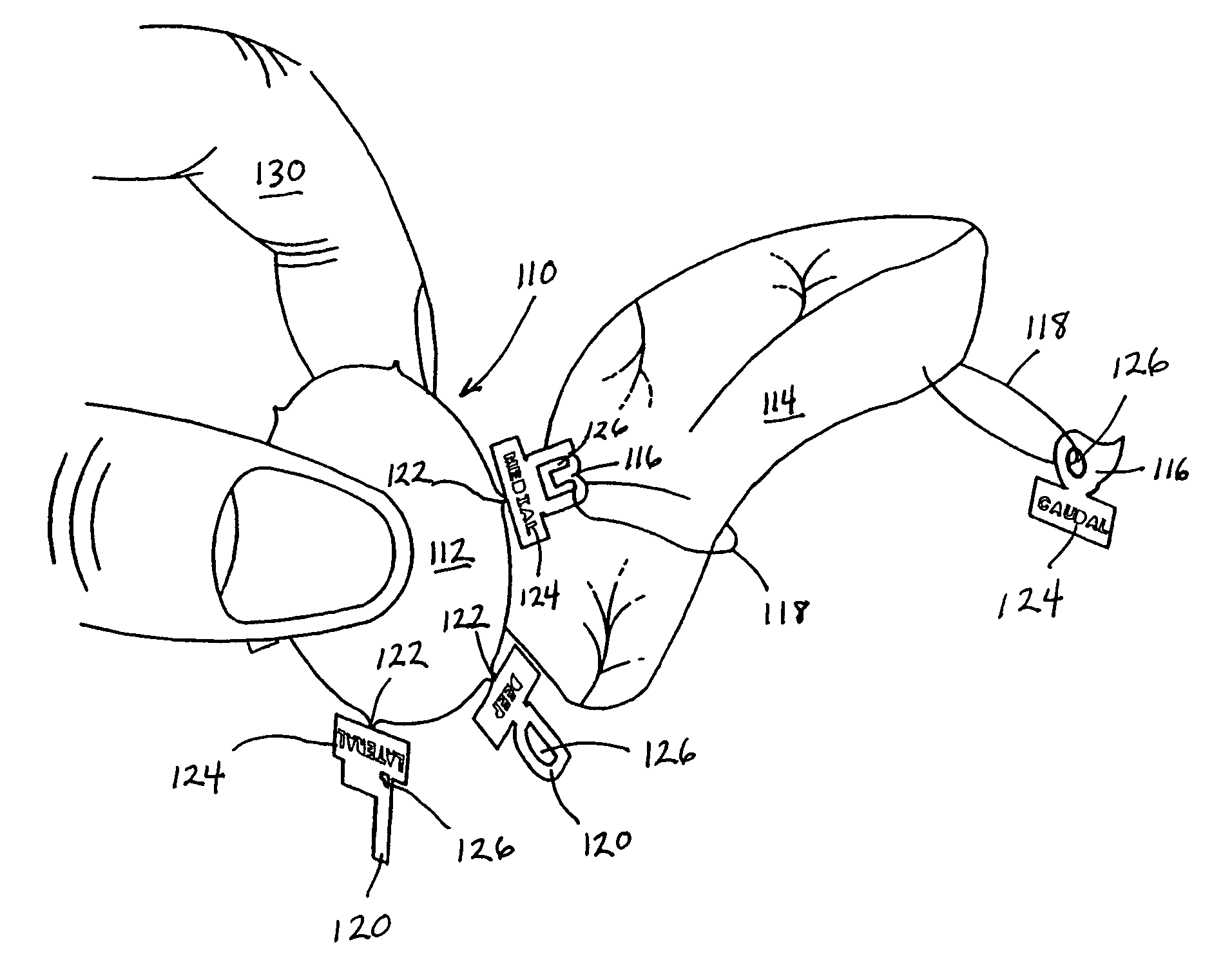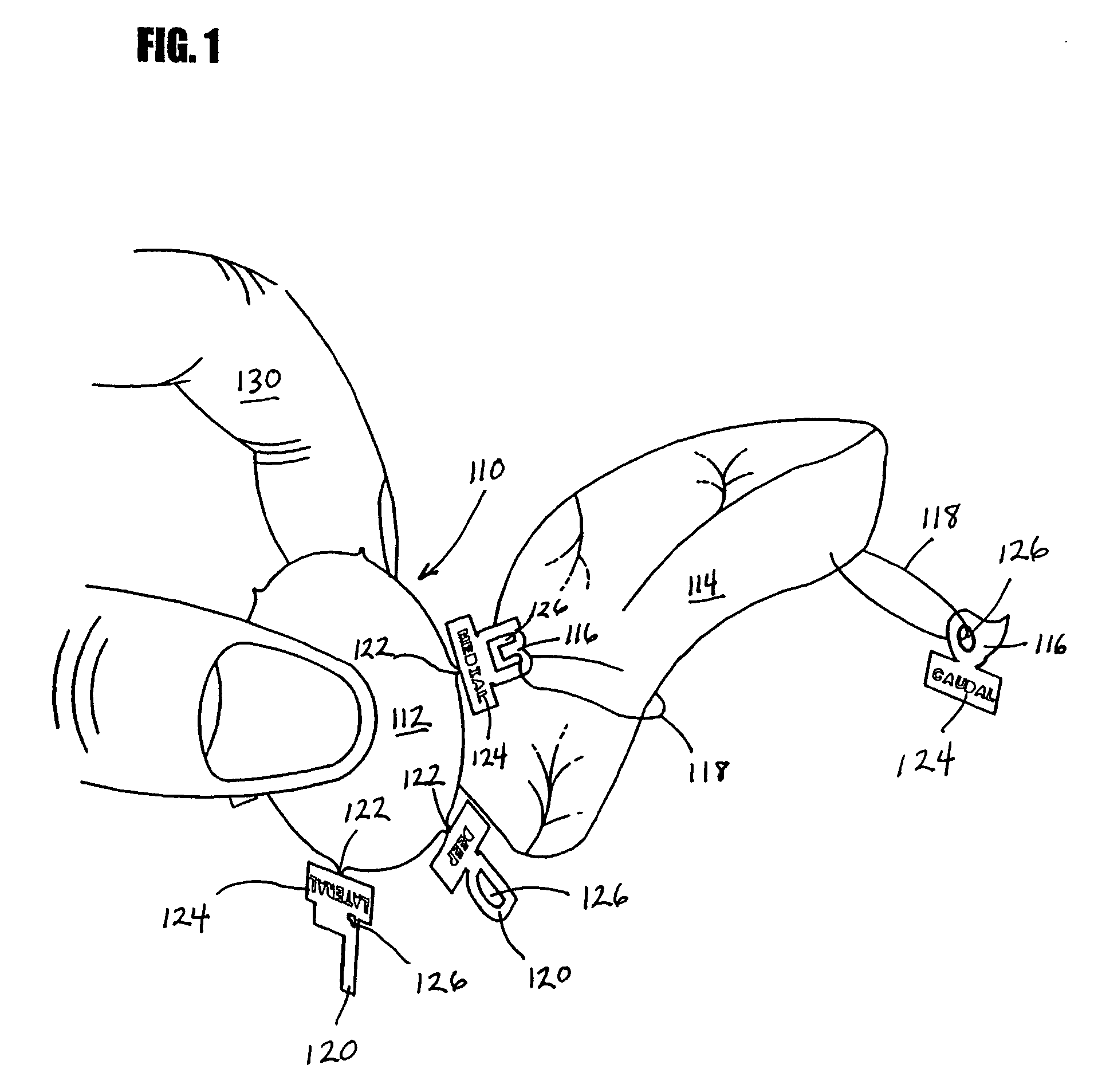Device and method for margin marking tissue to be radiographed
a technology for radiography and tissue, applied in the field of devices for marking specimens, can solve the problems of frustration between three professionals, unsatisfactory marking of specimens removed from patients, and inability to perform suturing and knotting regularly, so as to reduce confusion, reduce the amount of obstruction, and be easily gripped
- Summary
- Abstract
- Description
- Claims
- Application Information
AI Technical Summary
Benefits of technology
Problems solved by technology
Method used
Image
Examples
Embodiment Construction
[0019]The present invention overcomes many of the problems that arise when other radiopaque markers are used to mark radiography specimens. The advantages, and other features of the disclosed device, will become more readily apparent to those having ordinary skill in the pertinent art from the following detailed description of certain preferred embodiments taken in conjunction with the drawings which set forth representative embodiments of the present invention and wherein like reference numerals identify similar structural elements.
[0020]In FIGS. 1, 2, and 2A–C, numeral 110 generally refers to a margin marking device. In FIG. 1, a marker 116 is being secured to a specimen 114 to mark the margins of the specimen. The marker 116 defines an aperture 126 sized to accommodate sutures 118, staples, or like connecting means for securing the marker 116 to the specimen 114. The sutures 118 may be any length, although longer lengths will allow the marker 116 to be moved away from the specime...
PUM
 Login to View More
Login to View More Abstract
Description
Claims
Application Information
 Login to View More
Login to View More - R&D
- Intellectual Property
- Life Sciences
- Materials
- Tech Scout
- Unparalleled Data Quality
- Higher Quality Content
- 60% Fewer Hallucinations
Browse by: Latest US Patents, China's latest patents, Technical Efficacy Thesaurus, Application Domain, Technology Topic, Popular Technical Reports.
© 2025 PatSnap. All rights reserved.Legal|Privacy policy|Modern Slavery Act Transparency Statement|Sitemap|About US| Contact US: help@patsnap.com



